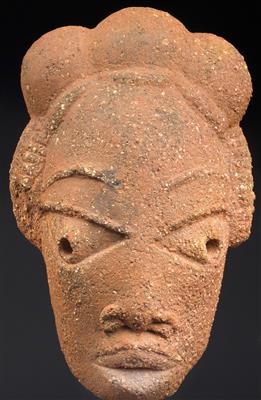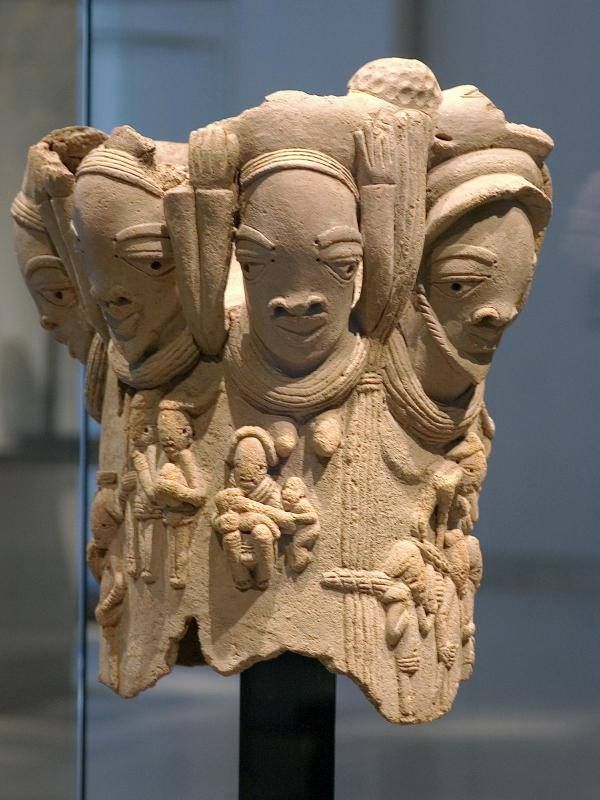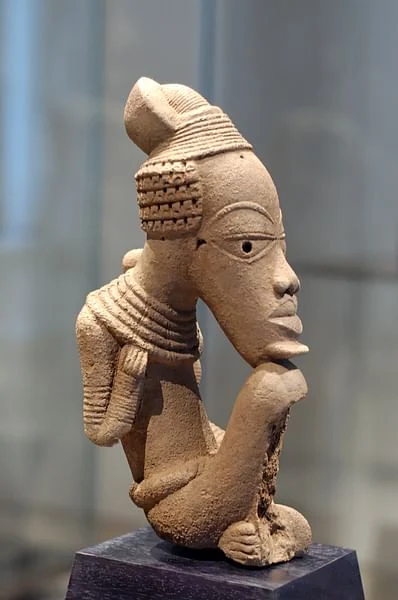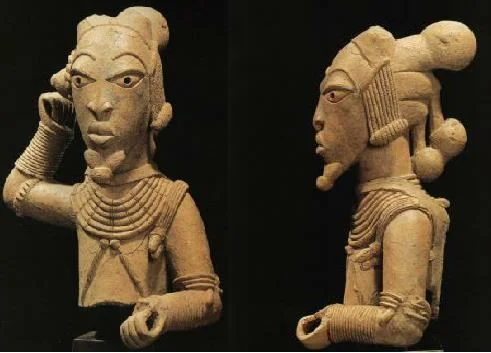The terracotta statues from the Nok civilisation were initially discovered in 1928 near the Ham hamlet of Nok in the Nigerian state of Kaduna. The Nok Culture lived in Nigeria for almost 2,000 years, from its appearance around 1500 BC to its mysterious disappearance around 500 AD.
The Nok culture, which is also referred to as the Nok figurine culture, is said to be an Iron Age culture that existed on the Benue Plateau of Nigeria. History has it that clay figurines of animals and stylized humans, mainly heads, are the most distinctive Nok artefacts; the style is characterized by perforated eyes that have an elliptical or triangular shape. Axes and other stone tools, stone decorations, and iron tools are additional remnants of the Nok civilisation.
In addition to the significance of its creation, which was at least 550 BC, and possibly a few centuries earlier, the Nok civilisation shows evidence of the use of iron in smelting and forging tools. Data from historical linguistics indicates that by 1000 BC, iron smelting had been independently found in the area.
In order to thoroughly examine Nok archaeological sites and comprehend Nok terracotta sculptures within their Iron Age archaeological context, scientific fieldwork was initiated in 2005.
However, the Niger-Congo-speaking such as Yoruba, Jukun, or Dakakari peoples may be descended from the Nok peoples because they all have cultural and artistic similarities with the Nok culture found in Nok, Sokoto, and Katsina.
In this piece, Naijabiography explores the origin and discoveries of the Nok culture, including the lifestyle of the Nok people.

The History
For many years, the Nok culture has remained an unsolved mystery, but as more research is being carried out, their civilization is being revealed and their significance is equally being realized. The Nok culture is also known as the Nok figurine culture. It was first discovered in a small village named Nok, located 500km from Abuja in 1928. This tribe thrived in Nothern Nigeria during the iron age, 500 BCE to 200 CE.
For years, the people of Nok were not recognized because they slowly appeared and quickly faded for no reason. However, in recent years, this tribe and their arts have been found to play a major role in the development of artefacts in African history.
The Nok culture was one of the earliest known societies in West Africa for the production of remarkable artefacts whose remains are of significant value. This culture is known for its unique terracotta sculptures and its early iron-smelting technology.

The Discovery of the Nok Culture
These artefacts of this culture were discovered by Bernard Fagg, an archaeologist who was working around the town of Jos in Northern Nigeria. Bernard and his colleague came to Nigeria to mine for alluvial tin. While they were mining, Fagg found some unique-looking artefacts, which he and his colleagues eventually traced to being owned by then-unknown cultures, now known as the Nok.
These artefacts are majorly terracotta sculptures of human heads, human figures and animals. One of the distinctive features of the Nok arts is the triangular or oval-shaped eyes on the human faces. The human figures of this culture also have elaborate hairstyles and are designed to be seated with their hands on their knees.
Archaeologists furthered their findings on the art found by Bernad and discovered that the clay used by the Nok people to make these artefacts also came from the same source. Although these artefacts were from the Nok village, it has not been proven that the artefacts were made by the people of that village.
The Significance of Nok Culture
The people of Nok prospered and became notable thanks to their iron-smelting technology, which enabled them to manufacture iron tools. The Nok culture provided the earliest instances of iron-smelting technology throughout sub-Saharan Africa, which might have emerged from Carthage (a Phoenician city-state in North Africa, now Tunis).
However, this iron smelting technology was found in a village in Abuja, Taruga, and no fewer than 13 iron smelting furnaces were found. Other iron artefacts from the people of Nok were discovered, such as farming tools and weapons.
While the people of Nok had iron-smelting technology, they also had stone and few metal tools, which suggests that metal materials were scarce during their time. The Nok are a prominent tribe, and that is because they are one of the very few civilizations in the world that transitioned from stone tools straight to iron tools without learning how to make either copper or bronze tools.
The legacy of the people of Nok is mysterious and, to date, their identity and origin haven’t been properly documented. Their origin is still surrounded by many speculations as some believe that the Nok’s craft influenced the metalwork of the people of Ife.
Apart from the stone artefacts and the terracotta artwork of the people of Nok, other details of the tribe, such as their societal settings, lifestyles, identity, and social organization, still remain unknown and untold. Nok art occupies a prominent place in Nigeria’s art because of its history, which dates back to the 2nd-5th centuries of the iron age. It was a product of a culture that appeared in Northern Nigeria around 1500 BC and disappeared under unknown circumstances around 500 AD.

Nok Terracotta Heads
The Nok terracotta statues’ purposes are still a mystery. The terracotta is largely still there in the form of strewn bits. Because of this, Nok art is solely recognized now for its highly detailed and refined heads, both male and female.
However, the finds are typically made from alluvial mud in terrain created by water erosion, so the statues are in fragments. There are buried, rolled, polished, and broken terracotta statues. Large-scale works are extremely valuable in the global art market because they are rarely preserved in their original condition.
Furthermore, terracotta figures are hollow, coil-built, almost life-size representations of human heads and bodies with highly stylized facial characteristics, a profusion of jewellery, and a variety of poses.
The pieces’ initial purpose is unknown, but hypotheses include that they served as burial markers, ancestor portraits, and charms to ward off disease, infertility, and crop failure. Additionally, based on the dome-shaped bases that were discovered on numerous figurines, they might have served as roof finials for historic buildings.

Legacy
Nok art and culture, in general, could have impacted succeeding cultures in the Niger River forest, such as Igbo-Ukwu and Ife, which reached their peak in the ninth century CE. Undoubtedly, the discovery of the beautiful works of art created by the Nok culture set a useful precedent that persuaded any sceptics who had any remaining doubts that the creations of those subsequent societies were in fact the works of native black Africans.





